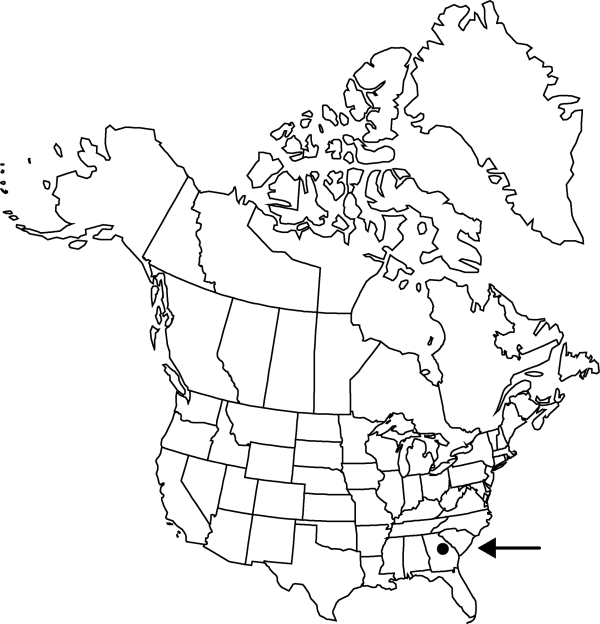Difference between revisions of "Portulaca biloba"
Repert. Spec. Nov. Regni Veg. 22: 355. 1926.
FNA>Volume Importer |
imported>Volume Importer |
||
| (7 intermediate revisions by 2 users not shown) | |||
| Line 16: | Line 16: | ||
}}<!-- | }}<!-- | ||
| − | --><span class="statement" id="st- | + | --><span class="statement" id="st-undefined" data-properties=""><b>Plants </b>annual, fleshy; roots fibrous. <b>Stems</b> prostrate to suberect, somewhat woody toward base; trichomes sparse at nodes, sparse to moderate in inflorescence; branches to 25 cm. <b>Leaf</b> blades linear to lanceolate, terete, 6–14 × 0.5–3 mm, apex obtuse; involucrelike leaves 5–7. <b>Flowers</b> 20–25 mm diam.; petals connate basally, purple-red, narrowly obovate-cuneate, 10–12 × 6–9 mm, apex deeply 2-lobed; stamens 40 or more; stigmas 4–6(–7). <b>Capsules</b> subglobose, 2.5–5 mm diam. <b>Seeds</b> gray, 0.7–0.8 mm diam.; surface cells mostly stellate, tuberculate. <b>2n</b> = 18.</span><!-- |
-->{{Treatment/Body | -->{{Treatment/Body | ||
| + | |phenology=Flowering late summer–fall. | ||
|habitat=Shallow soil-filled depressions, Altamaha grit sandstone outcrops | |habitat=Shallow soil-filled depressions, Altamaha grit sandstone outcrops | ||
|elevation=0 m | |elevation=0 m | ||
|distribution=Ga.;West Indies (Cuba). | |distribution=Ga.;West Indies (Cuba). | ||
| − | |discussion=<p>Portulaca biloba, previously known only from Cuba, is presently known from five sites in three Georgia counties. The infrequency of chasmogamous flowers suggests that it is “out of habitat.” The earliest collection is from 1965, but the date of its first introduction to the United States is unknown. One theory of introduction suggests seeds brought in by tropical storms (J. F. Matthews et al. 1991).</p> | + | |introduced=true |
| + | |discussion=<p><i>Portulaca biloba</i>, previously known only from Cuba, is presently known from five sites in three Georgia counties. The infrequency of chasmogamous flowers suggests that it is “out of habitat.” The earliest collection is from 1965, but the date of its first introduction to the United States is unknown. One theory of introduction suggests seeds brought in by tropical storms (J. F. Matthews et al. 1991).</p> | ||
|tables= | |tables= | ||
|references= | |references= | ||
| Line 31: | Line 33: | ||
-->{{#Taxon: | -->{{#Taxon: | ||
name=Portulaca biloba | name=Portulaca biloba | ||
| − | |||
|authority=Urban | |authority=Urban | ||
|rank=species | |rank=species | ||
| Line 38: | Line 39: | ||
|basionyms= | |basionyms= | ||
|family=Portulacaceae | |family=Portulacaceae | ||
| + | |phenology=Flowering late summer–fall. | ||
|habitat=Shallow soil-filled depressions, Altamaha grit sandstone outcrops | |habitat=Shallow soil-filled depressions, Altamaha grit sandstone outcrops | ||
|elevation=0 m | |elevation=0 m | ||
|distribution=Ga.;West Indies (Cuba). | |distribution=Ga.;West Indies (Cuba). | ||
| + | |introduced=true | ||
|reference=None | |reference=None | ||
|publication title=Repert. Spec. Nov. Regni Veg. | |publication title=Repert. Spec. Nov. Regni Veg. | ||
|publication year=1926 | |publication year=1926 | ||
|special status= | |special status= | ||
| − | |source xml=https:// | + | |source xml=https://bitbucket.org/aafc-mbb/fna-data-curation/src/2e0870ddd59836b60bcf96646a41e87ea5a5943a/coarse_grained_fna_xml/V4/V4_1012.xml |
|genus=Portulaca | |genus=Portulaca | ||
|species=Portulaca biloba | |species=Portulaca biloba | ||
| − | |||
| − | |||
| − | |||
| − | |||
| − | |||
| − | |||
| − | |||
| − | |||
| − | |||
| − | |||
| − | |||
| − | |||
| − | |||
| − | |||
| − | |||
| − | |||
| − | |||
| − | |||
| − | |||
| − | |||
| − | |||
| − | |||
| − | |||
| − | |||
| − | |||
| − | |||
| − | |||
| − | |||
| − | |||
| − | |||
}}<!-- | }}<!-- | ||
-->[[Category:Treatment]][[Category:Portulaca]] | -->[[Category:Treatment]][[Category:Portulaca]] | ||
Latest revision as of 21:56, 5 November 2020
Plants annual, fleshy; roots fibrous. Stems prostrate to suberect, somewhat woody toward base; trichomes sparse at nodes, sparse to moderate in inflorescence; branches to 25 cm. Leaf blades linear to lanceolate, terete, 6–14 × 0.5–3 mm, apex obtuse; involucrelike leaves 5–7. Flowers 20–25 mm diam.; petals connate basally, purple-red, narrowly obovate-cuneate, 10–12 × 6–9 mm, apex deeply 2-lobed; stamens 40 or more; stigmas 4–6(–7). Capsules subglobose, 2.5–5 mm diam. Seeds gray, 0.7–0.8 mm diam.; surface cells mostly stellate, tuberculate. 2n = 18.
Phenology: Flowering late summer–fall.
Habitat: Shallow soil-filled depressions, Altamaha grit sandstone outcrops
Elevation: 0 m
Distribution

Introduced; Ga., West Indies (Cuba).
Discussion
Portulaca biloba, previously known only from Cuba, is presently known from five sites in three Georgia counties. The infrequency of chasmogamous flowers suggests that it is “out of habitat.” The earliest collection is from 1965, but the date of its first introduction to the United States is unknown. One theory of introduction suggests seeds brought in by tropical storms (J. F. Matthews et al. 1991).
Selected References
None.